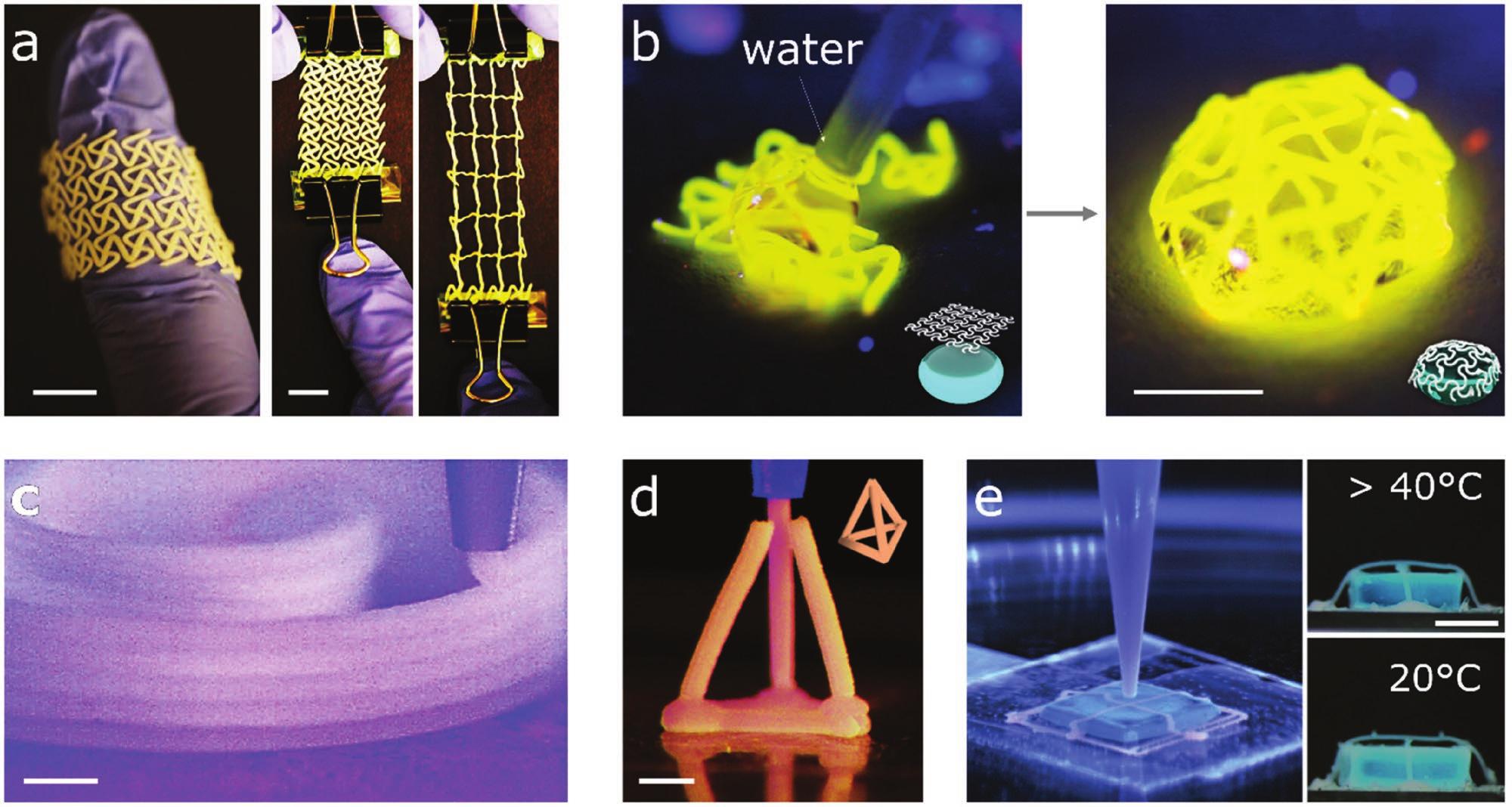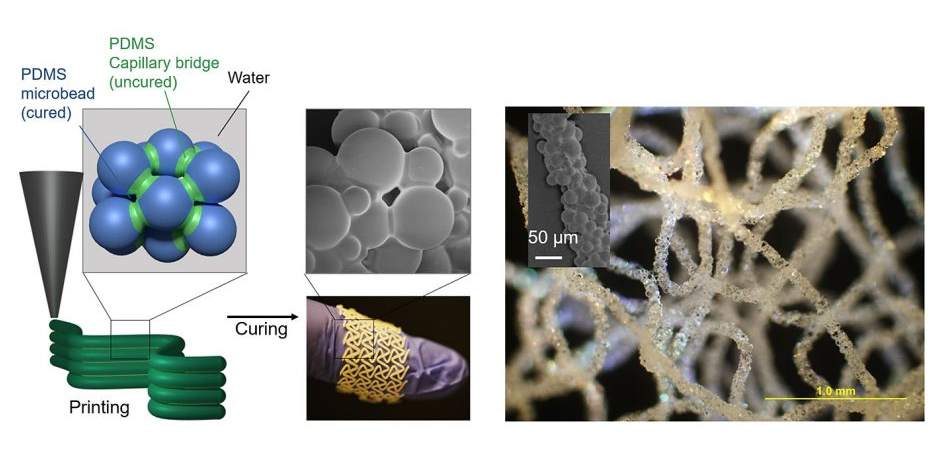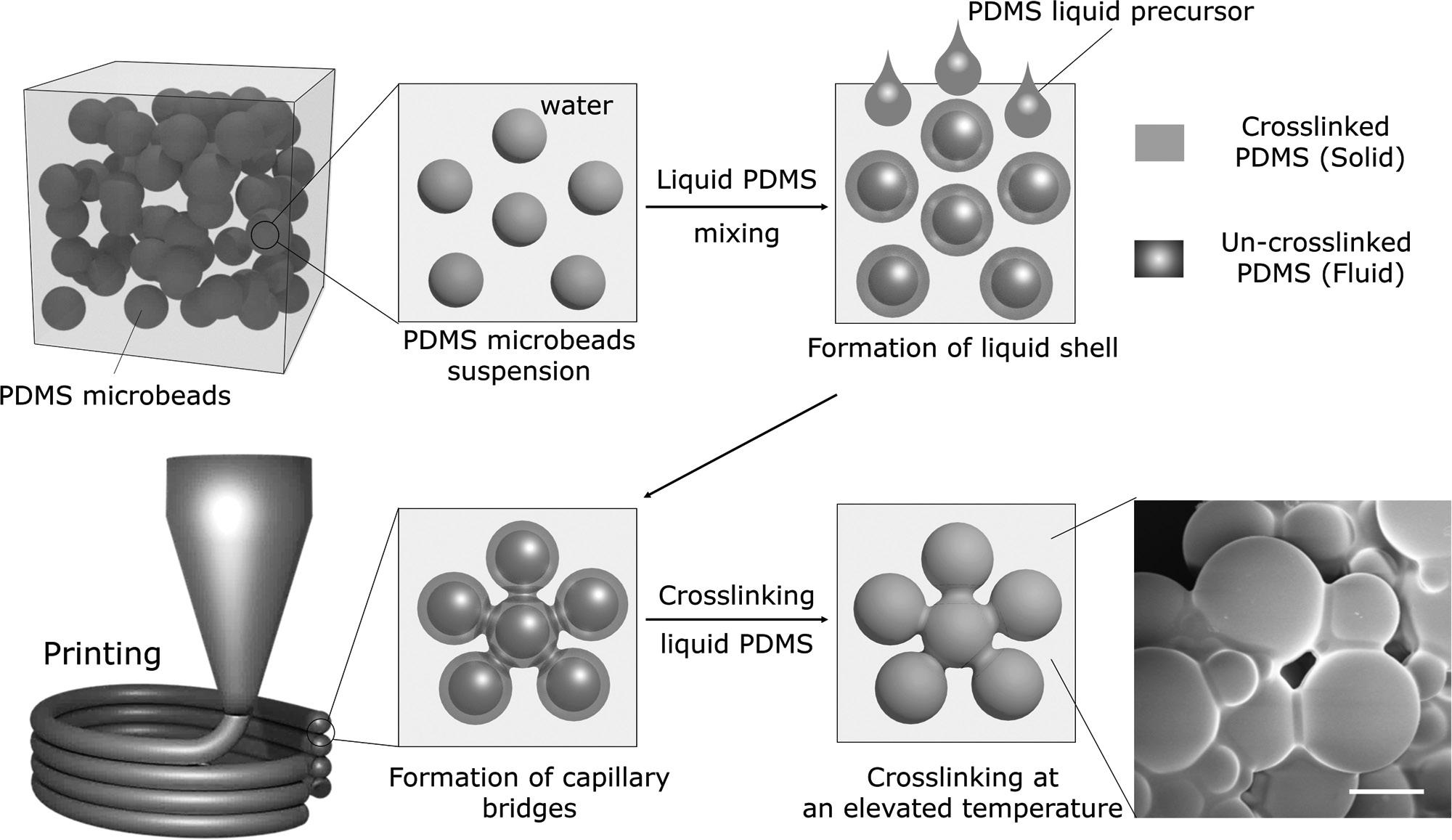Research from North Carolina State University has developed a method of 3D printing silicone by submerging the process in water. In the paper, the researchers liken the approach to building sandcastles since the silicone particles form capillary bridges when wet in a similar way that wet sand binds.
The process involves both liquid and solid silicone particles which is otherwise known as polydimethylsiloxane (PDMS). Combining the two silicone forms with water as a binder, the 3D printing technique has application for biomedicine and soft robotics. Interestingly, the process can take place in a dry environment or even underwater. The researchers state the 3D printing method could enable the direct printing of scaffolds onto live tissue.

“No special chemistry or expensive machinery”
The project is not the first to attempt to 3D print silicone, as Professor of Chemical and Biomolecular Engineering Orlin D. Velev understands, “you generally need to rapidly heat the material or use special chemistry to cure it, which can be technically complex.” Addressing this, the research team has created a method which uses “an extremely simple extrudable material that can be placed in a 3-D printer to directly prototype porous, flexible structures – even under water.” Velev explains further,
And it is all accomplished with a multiphasic system of just two materials – no special chemistry or expensive machinery is necessary. The ‘trick’ is that both the beads and the liquid that binds them are silicone, and thus make a very cohesive, stretchable and bendable material after shaping and curing.

Curing the silicone
Once extruded the silicone structures are heat cured at 85°C to cross-link the PDMS microbeads and liquid PDMS. By doing so, the technique is able to produce a flexible, porous structure which has particular applications in biomedicine. It is for this reason that silicone has been a particularly attractive material to 3D print with, however it has also proven fairly difficult to do so.

Other attempts at silicone 3D printing
Elsewhere in the field of silicone 3D printing, recent research has explored the use of suspending the process in support material and use of an SLA 3D printing method. The University of Florida implemented a vat of “light mineral oil” to 3D print the material, while Case Western Reserve University in Ohio developed a slicone resin for SLA 3D printing.
The article, titled ‘3D Printing by Multiphase Silicone/Water Capillary Inks’ has been published in Advanced Materials.
For all the latest 3D printing news, subscribe to the most widely read newsletter in the 3D printing industry, follow us on twitter and like us on Facebook.
Featured image shows a close-up of the constructed 3D printed silicone. Image via Advanced Materials.



